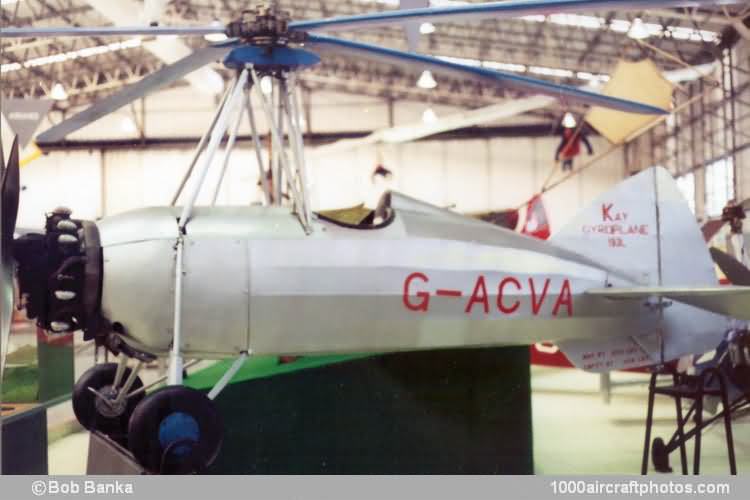08/31/2010. Remarks by Johan Visschedijk: "The pictured Gyroplane was not the first autogyro designed by David Kay of Blackford near Perth, Scotland, and John Grieve of nearby Scone. It was preceded by an even smaller single-seat wooden aircraft, designated Gyroplane 32/1, that was built at Shields Garage, Perth. Powered by an ABC Scorpion engine, it was tested at RAF Leuchars (ca. 22 mls, 35 km east of Perth) from August 1932, but was damaged there in a heavy landing in April 1933 and subsequently abandoned.
Kay Gyroplanes Ltd. was formed at Edinburgh, Scotland in 1934 to continue the development of the promising design, that introduced the first variable incidence rotors to a rotorcraft: i.e. the angle in which the rotor approaches the oncoming airflow can be altered to suit flying conditions. The result was the Gyroplane 33/1, with a fabric covered welded tubular steel fuselage, while the tail surfaces were of fabric covered duralumin alloy frames. Power plant was a 75 hp seven cylinder Pobjoy 'R' engine driving a coarse-pitch four bladed wooden propeller.
In 1934, Oddie, Bradbury & Cull Ltd. of Southampton, England (with previous experience of Cierva Autogiro rotor construction), was ordered to construct two airframes, c/n 1002 and 1003, that were respectively registered G-ACVA and G-ACVB on June 26, 1934. Both were delivered to Kay for finishing, however, only G-ACVA was completed and made its first flight from Eastleigh on February 18, 1935 piloted by Flight Lieutenant Arthur H.C. Rawson. Insufficient capital resulted in no more experiments, the machine was taken to Scotland and put into store, the registration was cancelled 24 years later, May 5, 1959.
G-ACVA is owned by Glasgow Museums and has been on display at the Glasgow Museum of Transport till 1998, when it was loaned to the National Museum of Flight."
